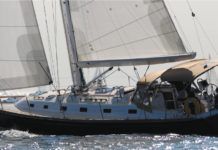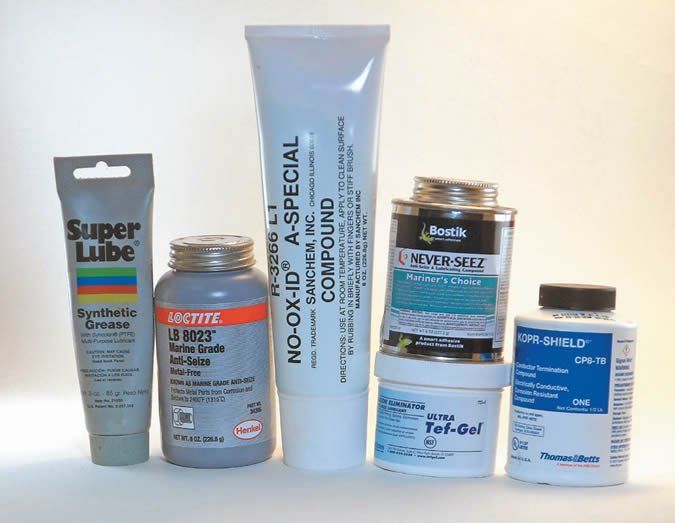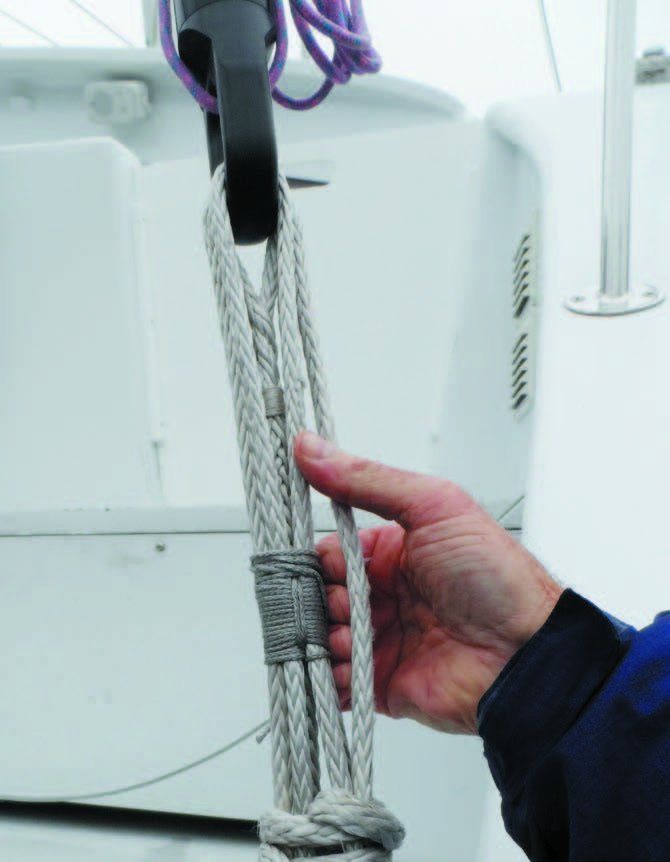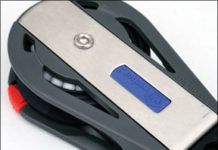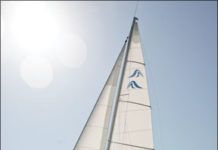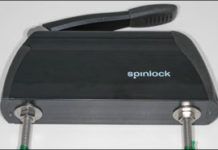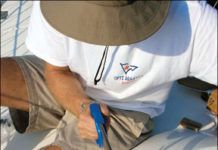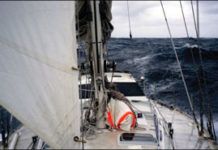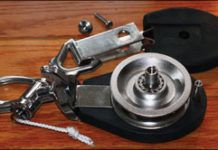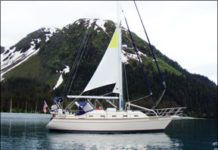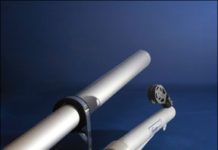Practical Sailor Tests and Reviews the Latest in Boat Ratchet Blocks
The racket block is one of the most recent innovations in the world of line-handling blocks. The most common use of a ratchet block is on smaller racing boats, where you are adjusting a spinnaker sheet or mainsheet by hand, without using a cleat. Uses on larger boats include running a line through a ratchet block when releasing the control line on a headsail furler, and for traveler control lines and genoa lead adjusters. In a search for the best ratchet block, Practical Sailor tested four ratchet blocks with on/off switches; three ratchet blocks with auto-sensing that will automatically flip the ratcheting on or off; and one ratchet block that has both an on/off switch and an automatic sensor. The head-to-head ratchet block comparison included products from top marine hardware makers Selden, Wichard, Ronstan, Holt Allen and Harken.
Shopping Sail Shape
Sailmakers put spin into more than their spinnakers, and when all is said and done, their art lies in turning flat material into a carefully controlled curved shape. The best-shaped sails-and the most expensive to build-are tri-radial shapes that are made from many smaller panels radiating from each corner of the sail. These sails have many more seams and require more sewing but allow the bias, or strength axis, of the cloth to be critically aligned. Most racers and performance-oriented cruisers opt for the cut because the sail shape can be better developed with this approach. A cross-cut and a miter-cut are both valid but simpler approaches to sailmaking. They lessen the number of panels and consequently the labor involved with manufacture. As long as the material used affords appropriate load handling characteristics associated with panel alignment, all is fine, especially for a cruising application where lighter weight and the final nuance of shape are less critical. More important than whether the sail is cross cut or miter cut is how well it fits and sets on your boat, and the sailmaker to choose is the one who will come aboard and make sure that his or her handiwork actually fits properly. If they both agree to do that, then take a close look at the detail work in their sails. Is the area around pressed-in rings well-reinforced? Are leech lines easy to operate? How is UV protection handled?
Practical Sailors 2009 Rope Clutch Review
Testers put six rope clutches through their paces on a test jig that measured line tension, line slippage, and the clutches holding ability over a long period of time. In terms of overall value and performance, the units tested were a tightly grouped field of competitors. Practical Sailor testers evaluated rope clutches from Euromarine Trading (Antal), the Antal V-cam 814 and Antal V-grip Plus; Lewmar D-1 and Lewmar D-2; Spinlock XCS and Spinlock XTS; and a prototype clutch from California-based Garhauer Marine Hardware. The search for the best rope clutch took a look at the pros and cons of employing a rope clutch for specific tasks as knowing when to clutch and when not to clutch is imperative for efficient line handling and safety.
Practical Sailor Tests the Alado Jib Furler
Practical Sailor finds the Alado Nautica headsail furler to be easy to install and a worthwhile sail-handling tool. One feature that sets the Alado apart from other jib or genoa furlers is its staggered slotting of five-foot foil sections that slide together and interlock over a conventional wire or rod headstay. This design allows the do-it-yourselfer to fit each foil section over an attached headstay, and simply push the formed furler up the wire or rod. Mainstream headsail furlers tend to be assembled on the ground and installed with the mast horizontal. The Alado furlers design uses integral halyards to place a compression load on the foil, eliminating the need for Loctite, set screws, and a top swivel. We tested the Alado over five months of coastal cruising and daysailing.
Heavy Weather Sailing Gear
From sea anchors, drogues, and trysails to forereaching and heaving to, tactics and gear for surviving a storm at sea vary greatly. During a high-latitude circumnavigation, Evans Starzinger and Beth Leonard, aboard their 47-foot Van de Stadt sloop, had several opportunities to test heavy-weather sailing tactics. The couples main storm gear was a Galerider sea drogue, made by sailmakers Hathaway, Reiser and Raymond, is a webbing bowl with a wire hoop. Deploying the drogue involved a bridle of strong nylon lines connected to the Galerider rode via an oversized galvanized swivel. Starzinger and Leonard used the Galerider when running before the wind in gale-force conditions. The drogue helped slow the boat, kept it from surfing down the face of a wave, and provided directional stability, which allowed their autopilot to maintain control. Drogues and other storm-survival gear and tactics are particularly necessary for short-handed crews and boats that tend to surf in heavy weather. Other storm gear for sailboats that Practical Sailor looked at included the Jordan Series drogue and the Seabrake drogue.
Farewell to Skip Allan’s S/V Wildflower
Anyone who has ever run before a gale knows how exhilarating it can be. On the right boat, in the right conditions, the adrenaline rush is as intense as any we’ll feel in this world. Bull riders, surfers, and skydivers get a few seconds of excitement. An ocean gale can last for days ... and that’s where the problem lies. With your senses completely in tune with the boat, wind, and sea, the experience of hurtling down an ocean wave stirs the soul. But as the hours pass and day turns to night, the thrill gives way to exhaustion. Mostly, you’re too busy to be afraid, but each mountain of green water that fills the cockpit brings doubt. How high will these waves get? How long can I last? Even with a drogue streaming off the stern to slow down the boat, running before storm-driven waves entails a great deal of risk. There’s danger enough aboard a fully crewed boat, as the rig, sails, and steering gear get pushed to the brink.
Farewell to Skip Allans S/V Wildflower
Anyone who has ever run before a gale knows how exhilarating it can be. On the right boat, in the right conditions, the adrenaline rush is as intense as any we’ll feel in this world. Bull riders, surfers, and skydivers get a few seconds of excitement. An ocean gale can last for days ... and that’s where the problem lies. With your senses completely in tune with the boat, wind, and sea, the experience of hurtling down an ocean wave stirs the soul. But as the hours pass and day turns to night, the thrill gives way to exhaustion. Mostly, you’re too busy to be afraid, but each mountain of green water that fills the cockpit brings doubt. How high will these waves get? How long can I last? Even with a drogue streaming off the stern to slow down the boat, running before storm-driven waves entails a great deal of risk. There’s danger enough aboard a fully crewed boat, as the rig, sails, and steering gear get pushed to the brink.
Snatch Block Test Update
Practical Sailor evaluated six snatch blocks in August 2007, with the Harken 1609 receiving the nod as the best all-around snatch block. As a follow-up, Practical Sailor compared two Ronstan snatch blocks, the Ronstan 6831 and the Ronstan 6751, to the Harken block. The Ronstan RF-6751 sports an investment-cast stainless-steel sheave, a heavy-duty latch, and side plates covered with thick, thermoplastic rubber cheeks. The block’s ruggedness and user-friendly latching function make it ideal for heavy duty applications on a cruising boat. Ronstan’s RF-6831 has a stainless-steel frame and tough PVC cheeks. It is representative of Ronstan’s alloy-sheave blocks with its high-quality construction, mid-range cost and working load. Although Practical Sailor prefers the Harken for everyday use, both Ronstan blocks are well-suited for cruising sailors.
A Tale of Two Trysails
Storm trysails rarely get the close look they deserve. Designed to replace the mainsail in a severe storm, it spends most of its life in the sail locker. Trysails should be cut flat, and the center of effort located to optimize stability and helm balance. Generally, the trysail’s clew should be just above the boom, its tack just above the furled mainsail’s head and its head near the mid-point of the mast. It is best to work closely with a sailmaker or a boat’s designer to get the right size and shape trysail. When inspecting or commissioning a trysail, pay close attention to detail at the head, clew, tack, leech, and luff.
Extending the Bow: Are Add-on Sprit Kits Worth It?
Easy-to-handle, lightweight sails continue to gain in popularity with performance-oriented cruisers. Setting a large, light-air sail a couple of feet ahead of the boats stem improves performance and sail-handling characteristics but presents challenges and risks. Practical Sailor reviews four aftermarket bowsprit kits and examines whether adding a spar to the front of your boat is safe, effective, and worth the added cost and effort. Aftermarket sprit kits by Forespar (Banana Sprit), Forte, Selden and Sparcraft are reviewed.











